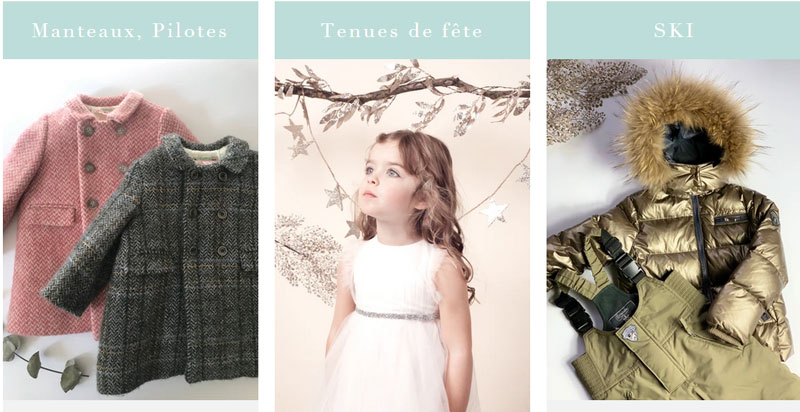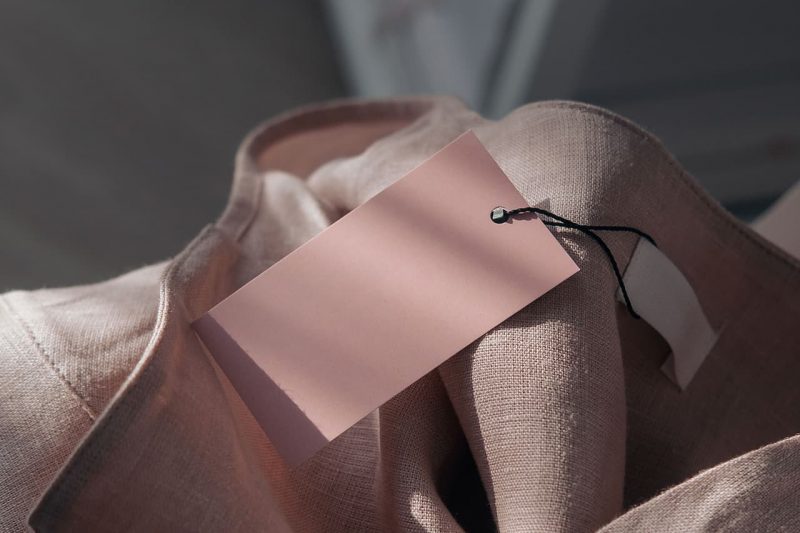For three years now, fashion and the pollution that it generates have been singled out for criticism. Fashion is, after all, the world’s second most polluting industry.
According to Greenpeace, the number of garments produced every year exceeds an eye-watering 100 billion! On average, French women purchase 30 kilos’ worth of clothing and accessories per year. Each kilo of clothing pollutes 200 litres of water.
So this is prompting a reaction from brands, and new expressions are appearing: ethical fashion, environmentally-responsible fashion, sustainable fashion, transparent fashion, considerate fashion, ‘upcycled’ fashion, conscious fashion, and of course clean fashion. Although the word clean is already commonly used in the beauty sector, there is no official definition of it. So what’s the definition of clean fashion? How do you find your way through all these new ‘fashions’? Here is our overview.
A real acceleration since the public health crisis of 2020

Unsurprisingly, clothing purchases dropped significantly in 2020 and well-known brands folded, in equal measure in the USA and in Europe (J. Crew, American Apparel, André, Camaïeu, Naf Naf…). Consumers had more than enough time to ask themselves: do we need so many clothes in our wardrobes? Is it reasonable to buy more and more garments that will last one or two seasons, sometimes at low prices? To support a polluting industry that also destroys vast amounts of its unsold stock?
In Sweden, the “köpskam” (“shame of buying”) movement has been on the rise since 2018, and specifically singles out the act of buying clothing. It’s similar to the “flygksam” (“flight shame”) movement that became a worldwide talking point. But it’s the fashion industry’s cycles and processes that need reworking.
Several fashion designers have themselves written manifestos and put together charters for a kind of fashion that’s considerate of the environment, and are already releasing collections along these lines (not least Marine Serre and Dries Van Noten). In May 2020, via an open letter, 600 fashion designers and buyers called for the fashion industry to start overhauling itself.
This kind of soul-searching and epiphany occurred for the first time concerning the use of fur, in the 1980s. Over the past five years, everything has been accelerated via social networks with the rise of the vegan philosophy. To think that Stella McCartney started this movement in the early 2000s!
Under pressure from consumers and animal rights activists, a large number of big brands (Burberry, Versace, Gucci, Armani, Givenchy, Ralph Lauren, Calvin Klein and also the luxury outlet Net-a-porter.com, etc.) stopped using fur in their collections. However, the synthetic materials used to produce this fake fur are problematic too, because they are very polluting. The search for a satisfactory environmentally-friendly fur substitute is being stepped up. Frédéric Godart, a fashion sociologist and lecturer at French business school HEC states “Around 20 years from now there will no longer be any animal products in fashion”. So it’s goodbye to leather, silk, wool…
From Fast Fashion to Clean Fashion
We all remember the harrowing footage of a tower block housing a textiles factory collapsing in Bangladesh in 2013, leaving more than a thousand people dead. A whole section of the country’s economy is based on fast fashion, which is a whole other issue. How can we slow down and stop the constant Fashion Week events that fuel mass overproduction? During the first lockdown, lots of brands turned the restrictions into an opportunity to put together virtual events, some of which were particularly creative.
Anti Fashion, a virtuous initiative for Clean Fashion
The high priestess of trends, Li Edelkoort, published her Anti Fashion manifesto back in 2015. Originally, she did so to slam the absurdity and obsolescence of the fashion system, throughout its chain. This lit the touch paper for Stéphanie Calvino, who then launched the Rencontres Anti Fashion events in Marseilles in 2016. Alerted by the fact that “no-one teaches young fashion designers how to change the way they produce output, or the public to change their consumer behaviour“, these day-long events met with success that gets bigger every year. In addition, other independent actors are putting training courses together. One example is the moocs (“massive open online courses”) run by Annick Jehanne, President of FashionGreenHub.org. This association of fashion and textile business leaders was set up in 2015, and last held its Fashion Green Days in January 2021.
Upcycling, an option for Clean Fashion?
Upcycling, or making new from old, is part of the clean fashion movement in that it offers responses in terms of sustainable fashion and the circular economy. It gives brands a ‘green’ bonus! Fashion giant H&M was quick to pick up on this, and back in 2012 launched the “Conscious Exclusive” collection. It replaces synthetic fibres with plant waste, for example, like Vegea. This grape “leather” is made from grape skins, grape seeds and vine stalks post-harvest. It’s even better if these materials are coupled with clean dyeing methods – information on this being rarely disclosed to the consumer. Cotton can be organic yet extremely polluting, due to its water footprint and the chemical dyeing process used! In any case, it’s better to use linen, which is biodegradable, only has a small water footprint and whereby “the whole of the plant is useful and used”. So says fashion chain Uniqlo, which also does not use chemicals in the various processing stages of its premium linen.
At any event, upcycling stimulates innovation and creativity. The young fashion designer Marine Serre (winner of the LVMH award 2017) is one of the best ambassadors of this approach, and she re-uses old clothing in surprising ways. Also noteworthy is the work done since 2002 by the Andrea Crews label and its Les Récupérables brand, set up in 2016, which picks up fabric rejects and offcuts from textile factories. This is a great idea, much like all the initiatives to fight food waste (les légumes moches (“ugly vegetables”), Too Good To Go, etc.).
Is environmentally-responsible fashion a response consistent with Clean Fashion?

As at end 2019, the French fashion institute [Institut Français de la Mode] estimated that sustainable fashion already represented some €7 billion in turnover. So it’s in the interests of major distributors and manufacturers to take this significant trend into account, as well as consumer sensibilities when faced with the impact of consumer behaviour. This new attitude is in line with the Clean Fashion movement.
- French mass retail chain Carrefour has undertaken to have its textile collections sold under its Tex brand made up of 100% sustainable and traceable fabrics by 2030. This will reduce the environmental impact of their supply chain and packaging. This work on the whole value chain is to be commended, even if 2030 seems an age away in view of the accelerating damage to biodiversity and the climate.
- Zalando has launched a sustainable fashion offering called “Small steps, big impact.” And incredibly, by 2023, this leading European online outlet will only distribute brands that meet environmentally-responsible standards! How stringent they are remains to be seen.
- Zara has announced plans to “review its quality standards and train its designers in circular economy methods”. Which doesn’t go far enough as these big hitters should really be producing less, which is not guaranteed to happen!
- French fashion chain Kiabi aims to be 100% sustainable by 2030.
- Reformation, one of the long-standing benchmark labels, was set up in San Francisco in 2009. This is the environmentally-friendly cool brand sported by celebrities, which conveys a great sense of humour via its slogan: “Being naked is the #1 most sustainable option”! It shuns a great deal of fabrics, like nylon, polyester, formaldehyde (no way, there’s even formaldehyde in clothing!! No wonder it’s recommended to wash brand-new clothes at least twice before wearing them…).
- France has its own environmentally-responsible brands: Sézane, Atelier Bartavelle, Atelier Tuffery, 1083, Ektor trainers, online store wedressfair…
Is pre-ordered fashion a solution consistent with Clean Fashion?
It’s an excellent option which would make it possible to produce less and in just the right quantities! A dream for senior executives, who can reduce the amount of capital tied up in stock, and can also request advances on pre-orders. This virtuous model is used by digital native vertical brands (DNVBs), young companies born into digital media, across all sectors. The Moda Operandi brand initiated this method in its high-end off-the-peg collections in 2010. Others followed, like British brand Pangaia and French brands l’Atelier Loden, Maison Cléo and Asphalte.
Buying second hand, the Clean Fashion way?
The experts say that second-hand clothing sales will overtake brand-new clothing sales before 2030! Virgil Abloh, Creative Director of men’s clothing at Louis Vuitton and founder of the Off-White brand, says: “Fashion is going to be about stopping buying brand-new clothes – that will be a thing of the past”. The Vinted platform is a real success (does anyone know even a single teenager who has never sold or bought anything on Vinted?!), especially in France where it was launched in 2013. Major retailers have followed suit. Zalando has a recently-introduced “pre-owned” fashion offering, and the seller receives store credit for the amount of the transaction. Brands like Etam, Petit Bateau and H&M have started moving into the second-hand market. This is an about-face for some of these chains that are based on disposable, cheap fashion. It’s also a commercial opportunity to stop this whole market from eluding them, since sellers receive store credit that they can’t go and redeem elsewhere.
Clothing rental, an alternative to Clean Fashion

Of course, renting your wardrobe, what a good idea! A number of young companies have popped up offering this kind of rental service (Everyday Runway, Le Closet, Little Clotherie…). Which totally fits in with our new habits, because since 2008, ownership has seen its status being eroded in favour of rental. When it comes to fashion, this allows you to wear upscale designer garments without the big expense, or simply to enjoy replacing your basic pieces frequently. The only hitch is that it deprives you of getting attached to a garment that you like snuggling into and feel good in, that you would often keep for a very long time, or even hand down to someone else! And the rental system also has the drawback of being polluting, given the freight transport distances covered and the many laundry cycles involved.
Is guaranteeing transparency the Holy Grail of Clean Fashion?
Yes, provided that the raw materials are natural and ‘green’! Carrefour intends to make them all traceable for its Tex products by 2030. The public health crisis was a real catalyst, including among the younger generations, even though they are keen on disposable fashion. For H&M, “Digital Natives, young consumers born into the digital age, understand these issues better than anyone, since they were born into a world with unlimited access to information”. Transparency is becoming a high-priority criterion for customers and a plus point versus the competition: “They now demand to be told how the clothes are designed, and whether the production chain is good for society. This Generation Z also wants to know whether we have a positive impact on society”. On its website, Maison Standards, launched in 2013, outlines every stage in the production of its garments. Jeans bought on there can be brought into stores for recycling. Everlane, which was founded 15 years ago in the US, makes transparency its watchword whilst driving this movement among brands born into the digital age.
Beware greenwashing
There is an array of solutions for buying more ethical, cleaner clothing, without sacrificing your style! Environmentally-friendly and environmentally-responsible fashion must be on a par with conventional fashion when it comes to quality, comfort, visual appeal and design.
It’s about being mindful of claims made by brands, and of the global dimension of the chain and carbon footprint. And wary of greenwashing, as condemned by Isabelle Marant “Right now, puffer jackets are being made from recycled bottles. Re-using petrochemical oil fibres is great. But basically, it’s exploiting ecology to make money. It’s not all that virtuous”.
Clean Fashion raises a great deal of questions: what’s the right volume to not damage the planet, people and resources? The issue of production is critical. Because if the globalised big hitters of fashion produce less each year, the circular economy will not be able to compensate. So this industry will have to rework its model by selling fewer, but better-quality products that will last longer and therefore command higher prices. And the consumer can at any time decide to stop buying a brand whose values don’t suit, or cut down on purchases to follow a kind of fashion that’s more environmentally responsible in a world that’s also cleaner.







